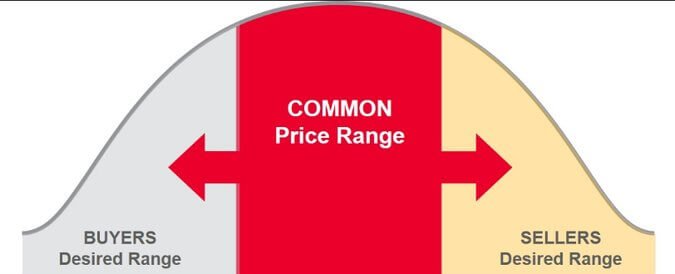Risk does not necessarily signal danger, but may be a game-changing opportunity
We seek to avoid all risks in investments & in life. Yet for any substantial gain in life , wealth, or personal stature risks must be taken. We must risk capital, time, or effort or a combination of these, for a significant return. While we all chant the mantras of positivity & hoping for the best, genetically, we are genetically hardwired to avoid risk.
As a school kid, foraging Bombay's Dalal Street, Max Gunther's The Zurich Axioms: Investment Secrets of the Swiss Bankers introduced me to risk. The Zurich Axioms made me reaize that I could make risk work in my favour.

Max Gunther, born in England, emigrated to the US at 11, attended schools in New Jersey, received his B.A. from Princeton served in the U.S. Army, staff member of Business Week, served as a contributing editor of Time, was published in several magazines & wrote The Luck Factor, How to Get Lucky, The Very, Very Rich and How They Got That Way, Instant Millionaires & Wall Street and Witchcraft. His magnum opus remains The Zurich Axioms.
When I grew out of my teens, I learned that The Zurich Axioms: Investment Secrets of the Swiss Bankers by Max Gunther which addresses risk management strategies in the investments, were also a useful guide for generic business and management decisions.
Let's dive in to the 12 risk-related decision-making elements or to be considered when making important decisions or Zürich Axioms.
Philosophy
- Low-risk savings strategies do not generate wealth.
- You will very rarely become wealthy from low-risk savings strategies.
- Financially successful people have generated their wealth by managing risk & opportunity.
- Wealth is generated through markets like real estate, stocks, or enterprise where risk is a critical component.
Goal
- Maximize personal wealth, RoI & personal satisfaction.
- You will very rarely become wealthy from low-risk savings strategies.

All quotations in this blog post, quoted directly or abridged from THE ZURICH AXIOMS: The rules of risk and reward used by generations of Swiss bankers by Max Gunther, published by Harriman House.
The Zürich Axioms
Axiom 1
In order to obtain a respectable return, or to maximize one's well-being or career ambitions, an individual must assume a certain level of risk.
Risk makes us uncomfortable. Many seek to avoid all risk. But successful investors always play for meaningful stakes, assume risks, & resist the allure of diversification.
Diversification has three major flaws:
(1) diversification is contrary to the notion one should always play for meaningful stakes,
(2) by diversifying a situation is created which gains and losses are likely to cancel each other out,
(3) by diversifying too many investments are involved to closely track, therefore it is difficult to assess the risks and rewards of each.
The first axiom says to put your money at risk.
Don't be afraid of getting hurt, especially if you are younger and have time to recover from cyclical downturns.
The degree of risk embraced should not be hair-raising. On the other hand the risk incurred must reflect a meaningful investment.
Axiom 2:
Always take your profit too soon.
The successful investor recognizes their gains early rather than waiting too long to sell.
Markets are cyclical whether dealing in real estate, gold, grains, or stocks, and gains can quickly reverse.
An investor should sell and recognize a profit when the investment reaches the expected goal.
The issue of when to sell to recognize a gain is a very difficult one even for expert investors.
An investor should set a goal for returns at the start of the venture. When that return is realized in investor should sell. In rare instances, the situation may change. Facts may indicate that further upside is possible; in that case an investor may want to re-examine & only sell a portion of the investment.
Axiom 3:
When problems arise sell quickly.
This strategy will assist an investor in preserving capital.
Selling quickly when difficulties arise is difficult to implement because of the fear of regret, investment loss, & the admission that one has mis-analyzed the opportunity.
Good investors expect accept small losses as part of the investment business. Large gains should over time exceed the small losses that are recognized.
Axiom 4 :
Human behavior, and market behavior, cannot be predicted.
Distrust anyone who claims to know the future.
An investor should not build an investment program based on expert forecasts. Disregard those prognostications.
Nobody knows what the future holds, therefore it cannot be predicted.
Make your own decisions based on the applicable facts.
Axiom 5:
Chaos cannot be made orderly by the use of formulas
Because history rarely predicts the future, historical data & trends should be considered suspect when analyzing risk.
Complex mathematical formulas of financial behavior have failed numerous times even for very sophisticated investors.
An investor should not try to see order where order & predictability does not exist.

The focus should be finding a promising investment where the odds are tilted heavily in the investors favor.
Axiom 6:
Preserve your mobility & investment options.
An investor should not maintain their investment position due to loyalty to a company or individual. Losses should be cut short regardless.
If a better investment comes along an investor should sell and move on. Once losses begin they tend to continue, therefore investor should recognize losses quickly and reinvest the proceeds.
Axiom 7:
Hunches can be trusted if they can be explained.
It is a mistake to ignore hunches altogether, however it is also a mistake to trust them indiscriminately.
Through intuition and life experiences people compile a set of subconscious facts and information which may lead them to an investment idea.
Trust a hunch only if you can logically explain it.
Axiom 8:
Religion, superstition, & astrology have no role in investing.

Relying on religion, superstition, or the occult to provide wise investment decisions, especially with regard to risk management, is not a wise strategy.
Axiom 9:
Beware of excess optimism
You should never make an investment because you are merely optimistic about the future.
Investors should be confident with regard to their judgment, and the facts on which their analysis is based.
Axiom 10:
Disregard the majority opinion, it's probably wrong
Many times a majority of investors will draw the wrong conclusion.
It is very difficult to take a minority viewpoint with regard to a potential investment in the face of consensus.
An investment thesis supported by facts and reasoning is preferable blindly investing with the majority.
Axiom 11:
If it doesn't pay off the first time forget it.
If an investor makes a bad decision they should cut their losses quickly and move on.

Very rarely is it a wise decision to revisit the idea at a future date.
The investor should never try to save a bad investment by averaging down as a stock price declines.
Axiom 12:
Don't become entrenched to an inflexible long-range investment plan.

Business and economic conditions change constantly. A party should have the flexibility to sell or to add to a position and should not be locked into an inflexible position. Invest money in ventures that are attractive as they present themselves, and sell or withdraw money from investments as hazards present themselves or investment goals are realized.
What do you think, @steemit community?

Further Steem, Steemit
Steem, Steemit, Esteem: A Little Badass? Truly Beautiful?
As Medium monetizes, are there lessons for Steemit?

Your working world has changed forever.
Through internet marketing, you can make the internet work for you.
Even earn free bitcoin.














